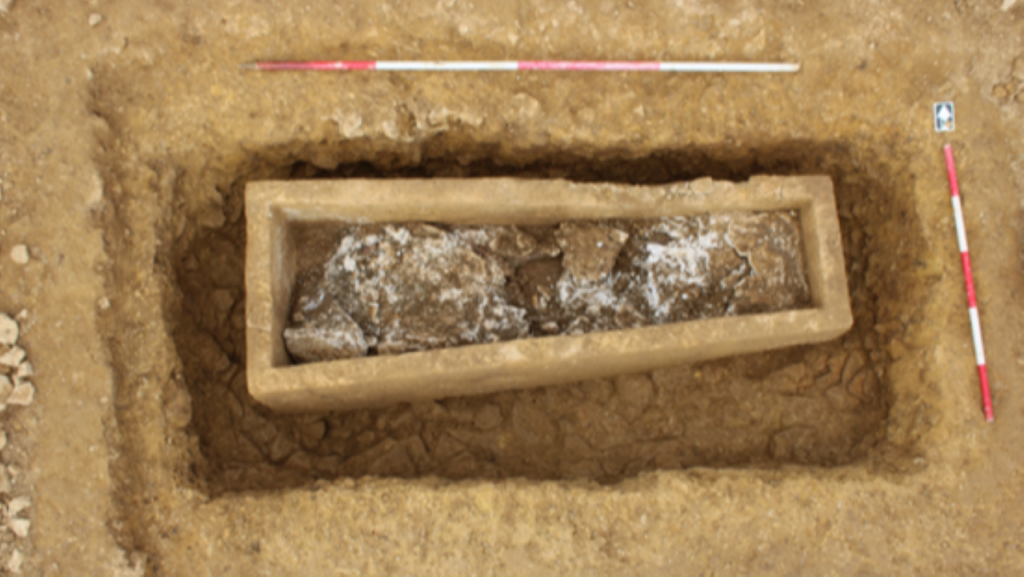During a recent highway construction project in England, workers made a remarkable discovery: an ancient Roman cemetery that included a stone coffin filled with a peculiar material. This captivating announcement was made public last week by National Highways, which is a government-run transportation authority in England. The excavation took place along the A47 road, a crucial route linking the West Midlands city of Birmingham to the eastern region of Suffolk.
According to officials from National Highways, the stone coffin was hand-carved and had remained “undisturbed since its burial in Roman times over 1,500 years ago.” Alongside this extraordinary find, workers uncovered twenty-three additional graves nearby, suggesting that the area once served as a communal or familial burial site. The overall discovery is categorized as a “small Roman roadside cemetery,” which came to light as highway crews worked to upgrade the road infrastructure.
The A47, particularly the section between Wansford and Sutton near Peterborough, closely follows the path of an ancient Roman road, hinting at its historical significance. The stone coffin, weighing approximately 1,600 pounds and measuring about 6½ feet in length, has been described by authorities as a “rare find.” The unveiling of such a coffin is indeed unusual since only around fifty of them have been discovered in the entirety of Roman Britain, emphasizing the archaeological importance of this site.
Archaeologists noted that the coffin’s significant weight was partly due to its contents: a mineral known as white gypsum, commonly used in plaster-making. While experts have determined that the coffin was likely crafted between 43 A.D. and 410 A.D., they have yet to ascertain its precise year of manufacture or the reason behind the presence of gypsum within it. National Highways speculated that the coffin might belong to a high-status member of the local community, as it is often common for wealthier individuals to have more elaborate burial practices.
The process of excavation has begun delicately, and archaeologists are working carefully to remove the bones interred within the plaster. Some fragments of the bones reveal imprints of the cloth that the deceased was laid in, offering insights into ancient mortuary practices. Adding to the intrigue, it was observed that the plaster formed a shape that closely resembled the body itself, indicating that meticulous care was taken in the burial process.
Moreover, investigators discovered other intriguing artifacts in the neighboring graves, including a collection that appears to belong to a young woman. One grave notably contained a set of valuables placed at the feet of her remains, suggesting it may represent a dowry intended for her journey into the afterlife. These items included glass and ceramic drinking vessels, possibly symbolizing a final toast at the graveside or a commemoration of an anniversary after her passing.
The occurrence of ancient Roman findings is relatively common within the United Kingdom, as evidenced by another remarkable discovery last fall. Archaeologists unearthed a 2,000-year-old road in London that was constructed shortly after the Roman invasion, which occurred in 43 A.D. These discoveries continue to provide a fascinating glimpse into the history and cultural practices of the Roman Empire in Britain.
In conclusion, the discovery of the ancient Roman cemetery along the A47 has not only captivated archaeologists and historians but also the general public, eager to learn more about the burial practices of this significant period. As further analysis and exploration unfold, more insights are likely to emerge from this remarkable site, enriching our understanding of Roman Britain and its enduring legacy.











